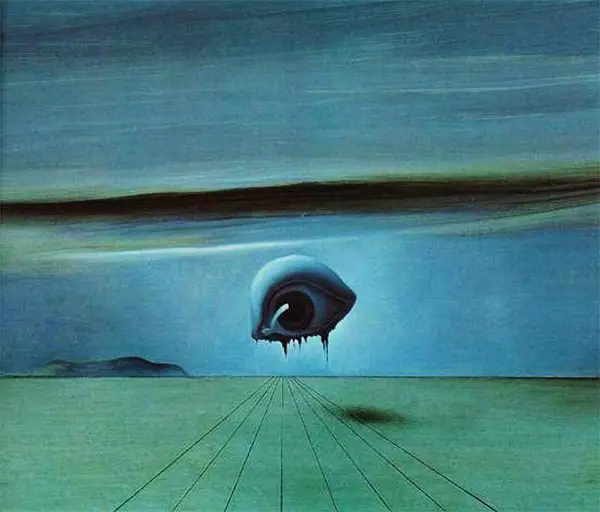It was part of a series of artworks that Alfred Hitchcock commissioned Dali to produce for the film "Spellbound". This 1945 film featured Ingrid Bergman as a psychiatrist and Gregory Peck as her patient.
Dali's paintings became the dream sequence that accompanied Gregory Peck's description of a dream. He describes being in some sort of gambling house, where the curtains were covered in eyes and were cut by scissors.
Dali's surrealist artwork was ideal for the symbolic Freudian imagery which accompanied Peck's description of his dream. In a time when psychoanalysis was popular and film special effects were still experimental, the dream sequence was an memorable part of the film.
Although Dali had created enough work for around 20 minutes, censorship meant that the actual sequence only lasted a few minutes in the final cut of the film.
The Eye painting is fascinating. The brown eye hangs in the air, all seeing but also being observed. The dripping edge is slightly disturbing, the reflection is puzzling. Hovering over a vaguely recognizable landscape, it's an impossible image.
The lines which track into the distance draw the viewer closer to the eye and add depth and dimension to the piece. The narrow palette of colours add an eerie, emptiness to the surroundings.
Dali was interested in films and collaborated with Hitchcock and Walt Disney. He was also extremely well versed in Freud's methodology.
Dali had read Freud's "Interpretation of Dreams" as a student in Madrid, so would have an understanding in Freud's use of symbols and visual images arising from the subconscious.
The Eye painting is both impressive and timeless, a wonderful piece of art that will continue to encourage discussion and further analysis.

